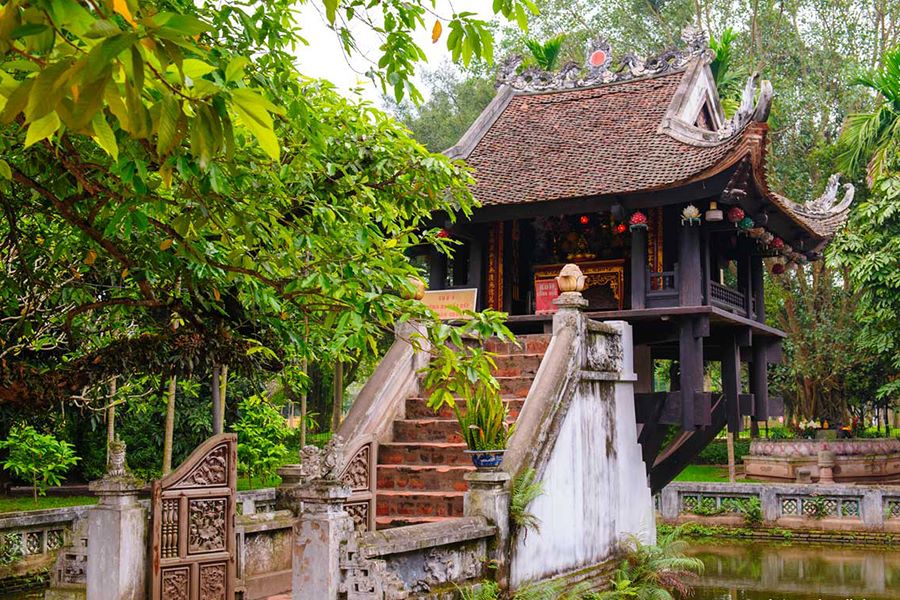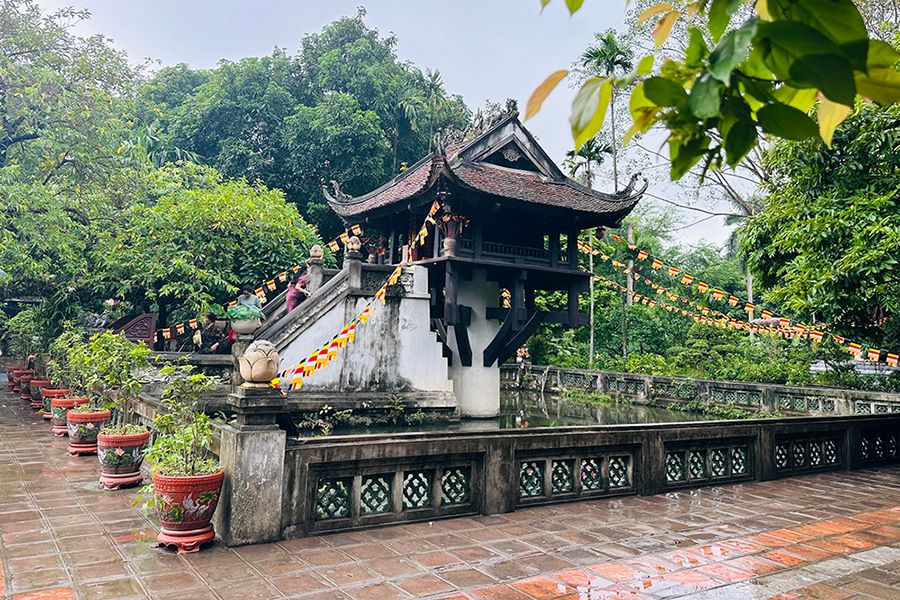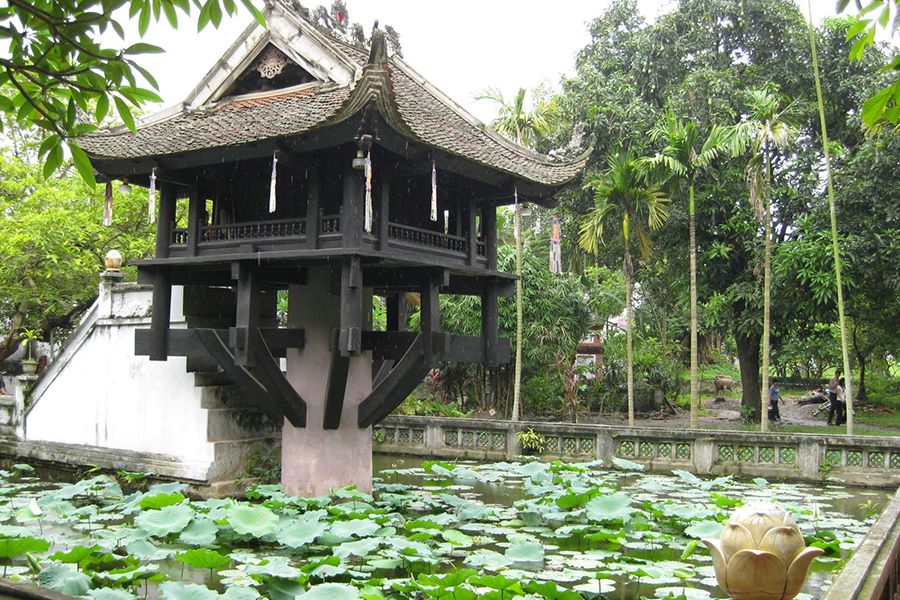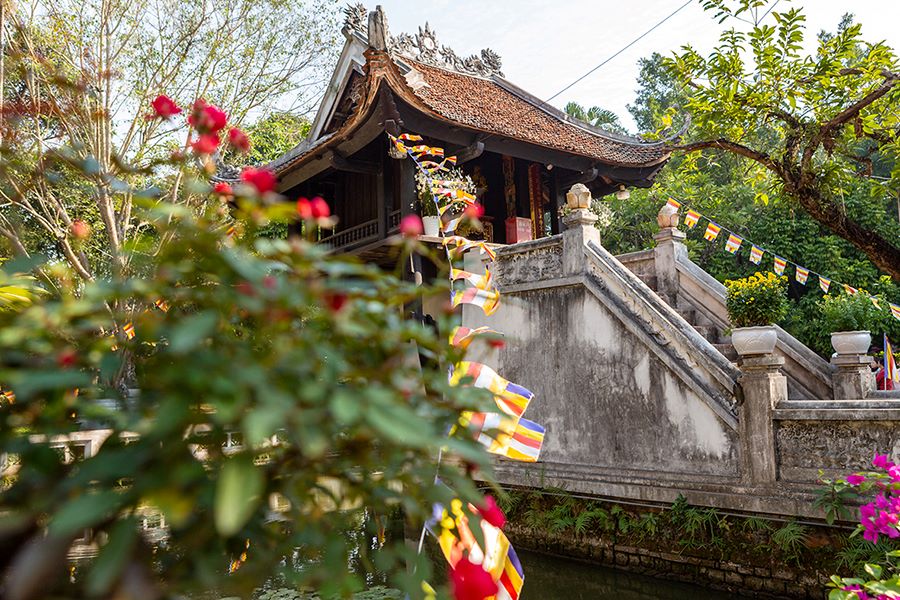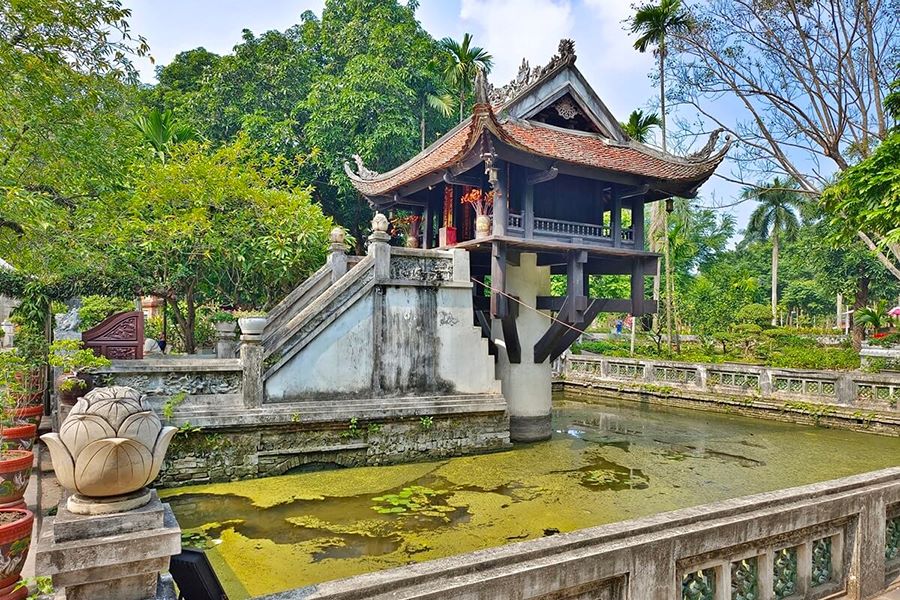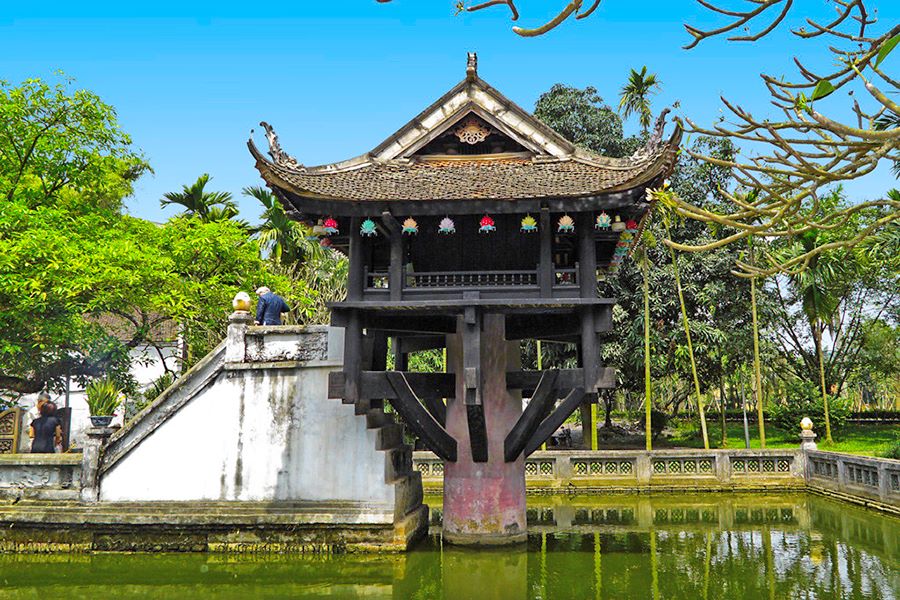One Pillar Pagoda is the iconic construction of Hanoi. It is famous for its unique architecture as a stylized lotus rising from the water. It is always a worthwhile destination for both domestic and international tourists in their Indochina tours.
The History of One Pillar Pagoda
One Pillar Pagoda, also known as Dien Huu Pagoda (lasting happiness) or Lotus Pagoda was built under the order of King Ly Thai Tong in 1049. According to the legend, the pagoda was built to reappear the strange dream of King Ly Thai Tong. The pagoda was made of wood and located on a single pillar.
The pagoda has experienced a lot of vicissitudes of history and has been restored many times. In 1955, it was restored and maintained until now. One Pillar Pagoda was recognized by the government as a National Historic Site in 1962. 50 years later, the Asian Record Organization recognized it as the pagoda with the most unique architecture in Asia.
The Location of One Pillar Pagoda
One Pillar Pagoda is situated in Doi Can Ward, Ba Dinh District, Hanoi City, on the grounds of the park behind Ong Ich Khiem Street. The Ho Chi Minh Mausoleum, the final resting place of our cherished Uncle Ho, and Ba Dinh Square, the scene of magnificent parades on Vietnamese national festivals, are located to the right of the pagoda.
The Architecture of One Pillar Pagoda
The Lotus Station
One Pillar Pagoda looks like a giant lotus rising from the pond. The temple has a square shape, inside there is a Guanyin statue. The most unique thing about One Pillar Pagoda is that it was built on a 4-meter stone pillar (not including the underwater), with a diameter of 1.2 m including two stone blocks overlaying into a closely fitting cylinder, hard to realize with eyes, the above stone block has woods playing the role of racks of the pagoda.
The pond below is surrounded by a brick railing. In the garden, there is a lush bodhi tree from the land of Buddha which was donated by President Rajendra Prasad on the occasion of President Ho Chi Minh's visit to India in 1958. In addition, One Pillar Pagoda is also a work with high aesthetics, reflected through the visual arts on the water, stone sculpture, painting, and carving … representing ancient values, bearing strongly the spirit of the nation.
Three-arched-entrance Gate
The Three-arched Entrance Gate, also known as Tam Quan Gate, is located on the One Pillar Pagoda complex. It features a horizontal painting that displays the three phrases "Dien Huu Pagoda." This gate was first constructed many years ago, however it was recently restored to increase the size of One Pillar Pagoda and provide a space for monks and nuns to conduct their religious duties in addition to greeting visitors. This magnificent gate is tastefully positioned in front of the temple to help mimic the traditional Vietnamese pagoda architecture.
The stairs leading to the main hall
There are thirteen steps with a width of roughly 1.4 meters that lead to Lien Hoa Dai's main hall. The Ly Dynasty's architectural style is still present in these ancient steps. While the number 13 is associated with misfortune and disaster in Western culture, it is associated with fertility and wealth in Eastern culture. Therefore, the 13 steps stand for the blessings that pilgrims get from the temple.
Quan Am Bo Tat is worshipped at Lien Hoa Dai. The main hall is a relatively big altar that features a gilded statue of the Buddha sitting on a wooden lotus, surrounded by items of worship including candles, flowers, fruits, and wine.
One Pillar Pagoda: Opening Hours, Entrance Fee & Dresscode
Entrance Fee
Vietnamese nationals are entitled to free entry to the One Pillar Pagoda. However, the cost is 25,000VND (1$) per person for foreigners.
Opening Hours
The Ho Chi Minh Mausoleum complex is where One Pillar Pagoda is located, hence its opening hours are dependent on the surrounding area. As a result, tourists can enter this unusual temple between the hours of 7 a.m. and 6 p.m.
How to Get to One Pillar Pagoda
Ba Dinh Square is by the pagoda. It is easy for guests to find and locate various transportation options. When visiting the Ho Chi Minh Museum, drivers of motorcycles and cars should park their vehicles at one of two spots:
Goc Ha Street and Ong Ich Khiem Street are next to the Ho Chi Minh Museum. If you decide to ride the bus, you can choose the following routes, which stop at stop 18A Le Hong Phong and travel through Ba Dinh Square: 09, 33, 22, 45, and 50. Since this is the bus stop next to the mausoleum, walking to the One Pillar Pagoda area is convenient.

